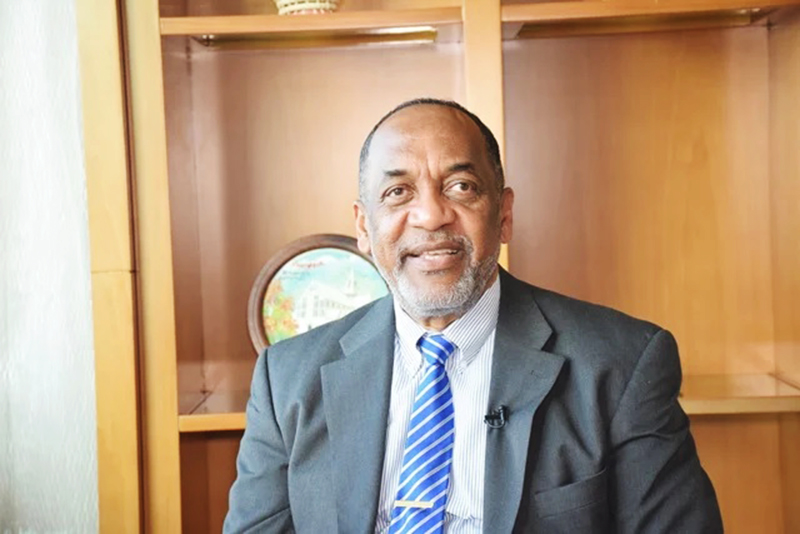Former head of the Environmental Protection Agency (EPA), Dr Vincent Adams says that the flaring fee being paid by ExxonMobil to Guyana is only 3% of what the company earns from the oil produced during flaring.
In a letter that was published in Tuesday’s edition of Stabroek News, Adams wrote, “It is repulsive that their [Exxon] only gas talks are to insultingly boast about the pittance they throw at us as a flaring fee which turns out to be a measly 3% of the money they reap from the flaring.”
According to Adams, flaring at Liza 1 could have been stopped with cutting production by 7-15% or about 7,000 to 15,000 barrels of oil per day. This is based on the 7 to 15 million cubic feet of gas that was reported as being flared per day.
Adams pointed out that based on the current oil price of about US$100 per barrel, such a production cut would see the loss of US$700,000 to US$1.5 million in revenues per day – which is approximately 35 times the flaring fee which would be US$21,000 to US$41,000 per day.
“In other words, Mr. Routledge (President of ExxonMobil Guyana, Alistair Routledge) you are making US$35 for every dollar spent in in fees when you flare. If you disagree, we challenge you to reveal your hidden data that show otherwise. Besides, we are sure even you would agree that this deal to make US$35 for each US$1 invested, is a super incentive and not a deterrence as nonsensically claimed by the government which has turned basic environmental principles on its head,” Adams further stated.
ExxonMobil has stated that it has paid over US$10 million to the EPA as a fee for flaring of climate harming gases.
“I am happy to say that we met our expectation of delivering it, installing it and safely starting it in July and we have achieved background flare now on Liza Destiny,” Vice President and Production Manager, Mike Ryan, told the media on July 26 at the company’s head office in Duke Street, Kingston, Georgetown.
According to Ryan, since July, background flaring has been less than one million cubic feet per day.
And while he pointed out that over US$10 million was paid to the EPA for flaring since a policy decision on fines was made last year, he did not divulge the total amount of gas flared. Instead, he said it was “within the permit and within the expectations that we work with the EPA.”
In May 2021, the EPA disclosed that the Environmental Permit for the Liza Phase 1 Development Project offshore Guyana had been modified and ExxonMobil’s subsidiary, EEPGL would now be required to pay for gas flaring once it continues beyond a 14-day period.
While the permit initially said that Exxon will be paying a fine for flaring, the payment is now described as a fee.
Routledge had informed that the gas compressor failed in the middle of the night on January 27, 2021, when optimisation testing was ongoing and the production level was around 130,000 bpd.
However, he maintained that this was not in any way linked to the malfunction.
Following the malfunction, the gas compressor and other key parts from the FPSO were sent to Germany for repair. A few weeks later, it was announced that logistics for its departure from Germany were being finalised following the successful completion of repairs, upgrades and mechanical testing of the compressor by MAN Energy Solutions, the equipment’s manufacturer, with quality assurance and control by experts from the vessel’s owner SBM Offshore, as well as Exxon.
On April 13, 2021 ExxonMobil announced that its third phase of testing of repaired gas compression equipment on the Liza Destiny had failed and that this had resulted in production being slashed to 30,000 barrels. However, several days later the company announced that it had begun ramping up output and that a solution was at least three months away during which controversial flaring would occur. The gas compressor was sent to Houston, Texas, in the United States for repairs.
Government had also expressed disappointment at ExxonMobil’s failure to resolve the problem with the compressor problem on its oil platform that led to flaring of gas and a steep drop in production.





